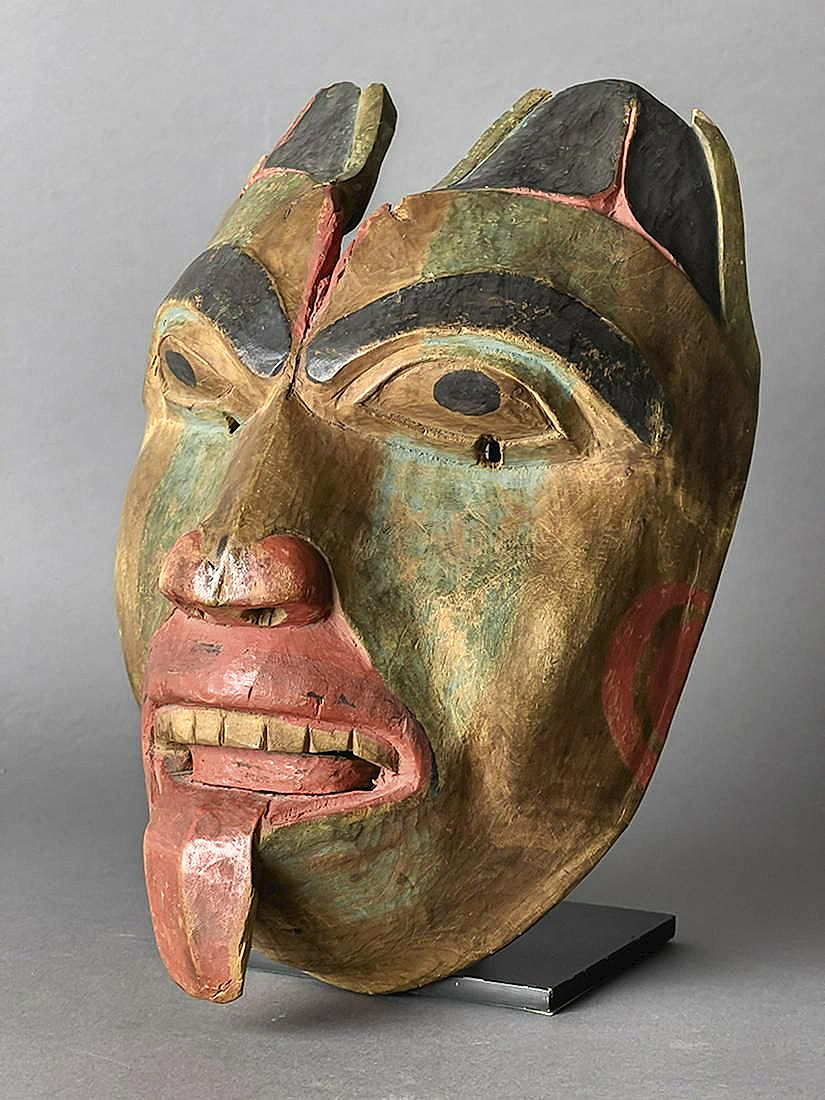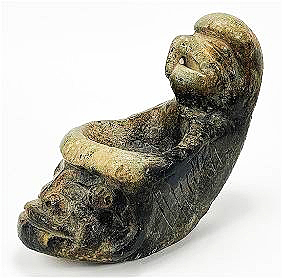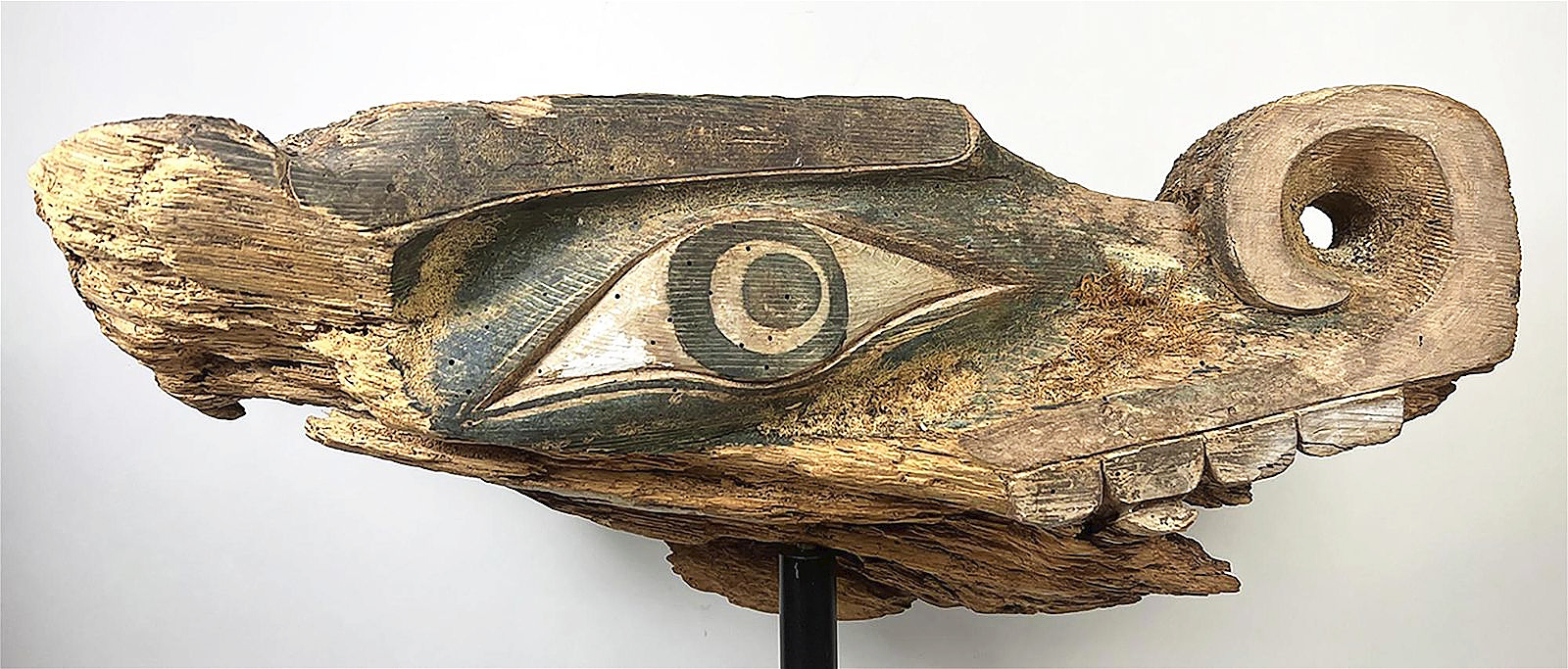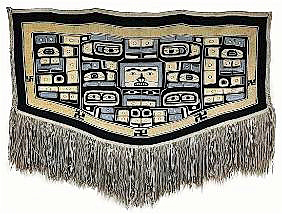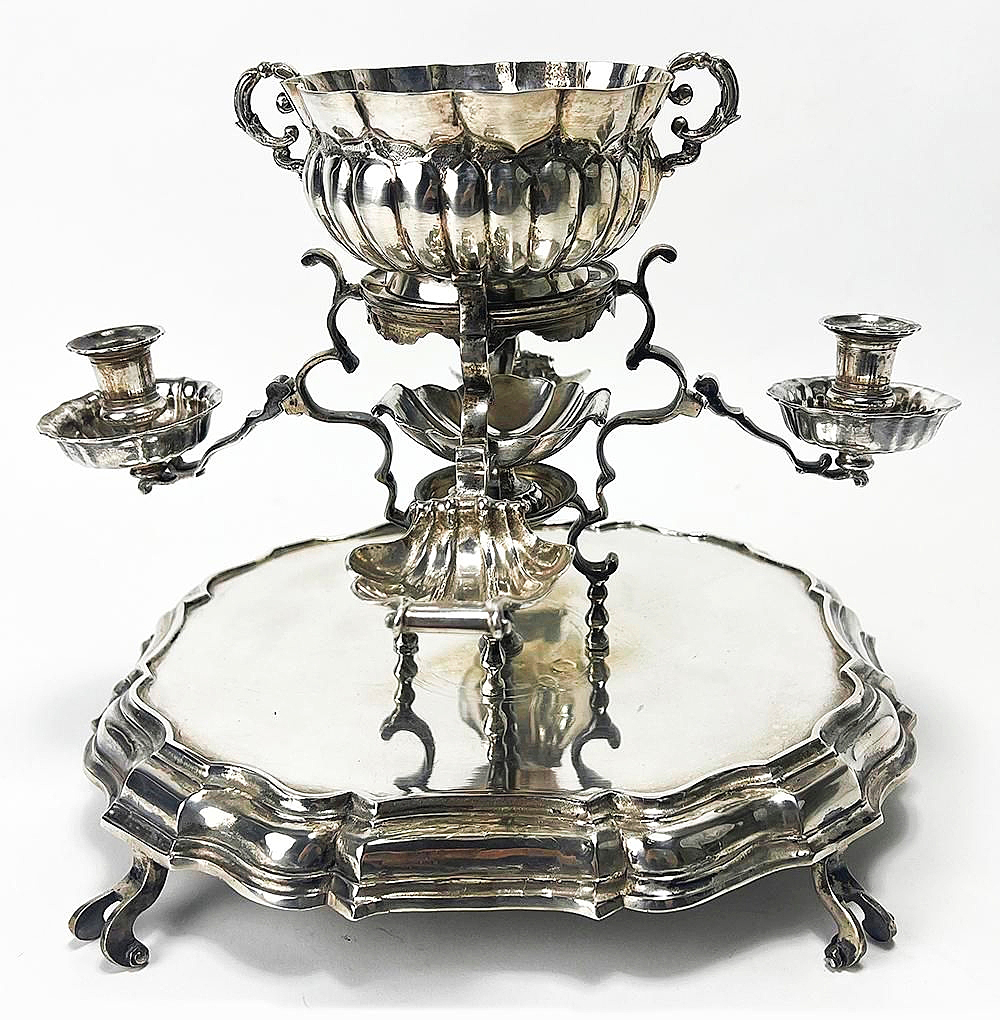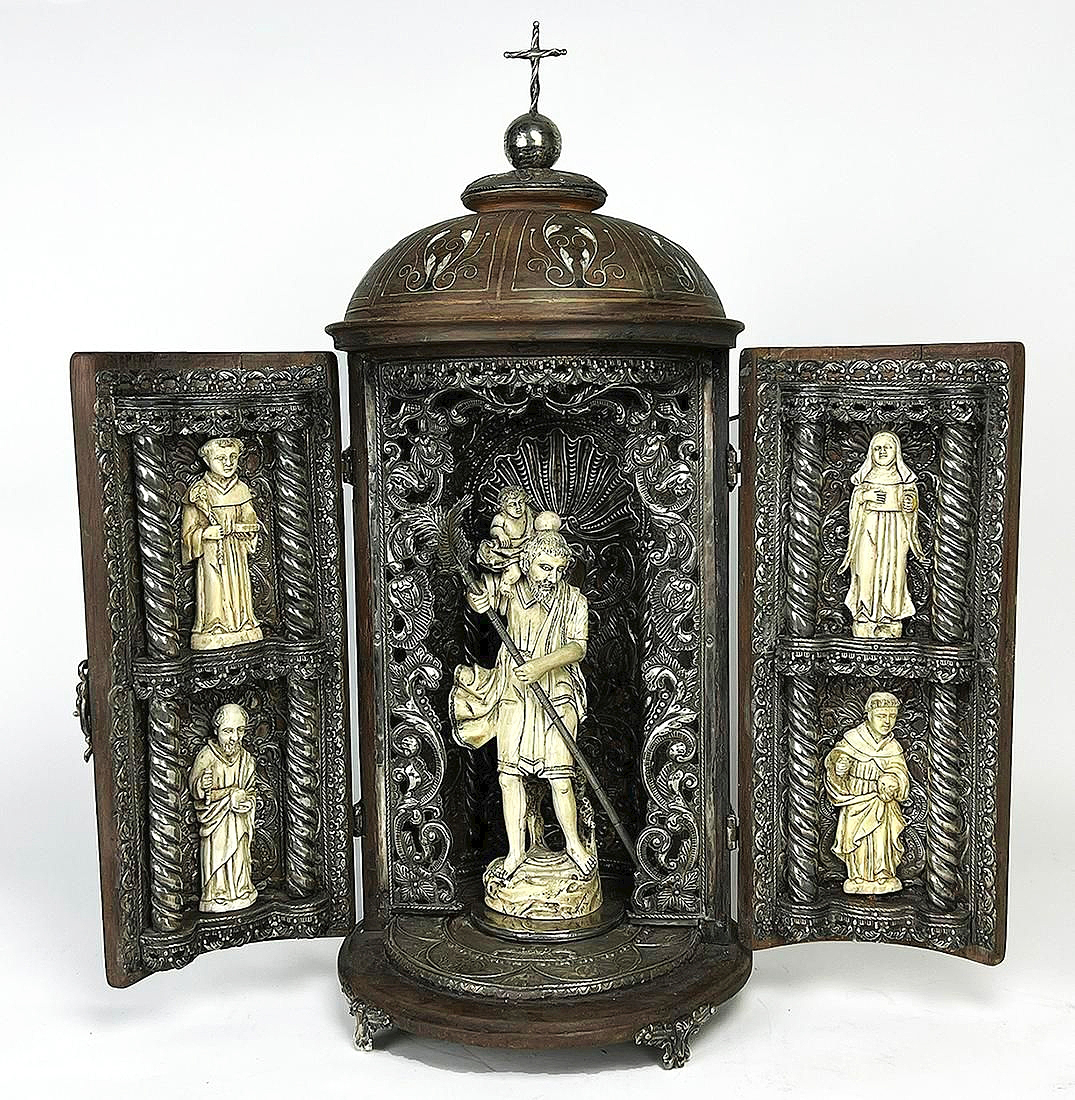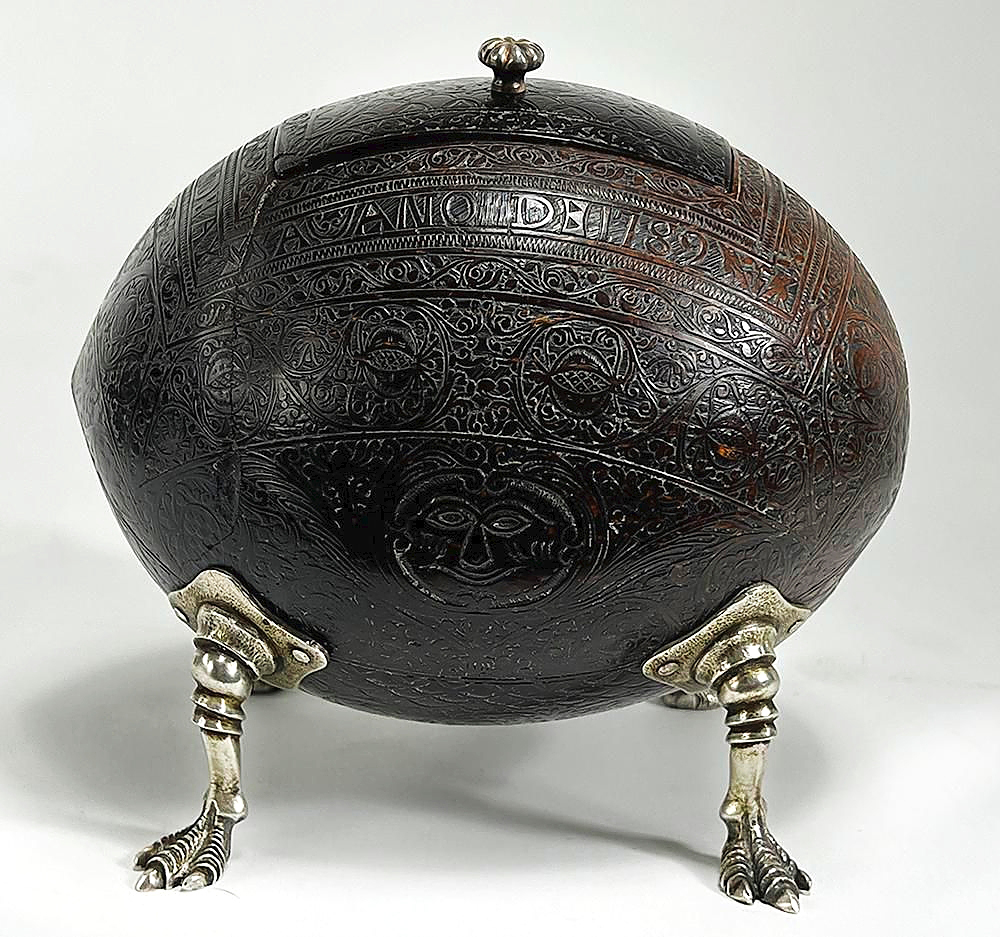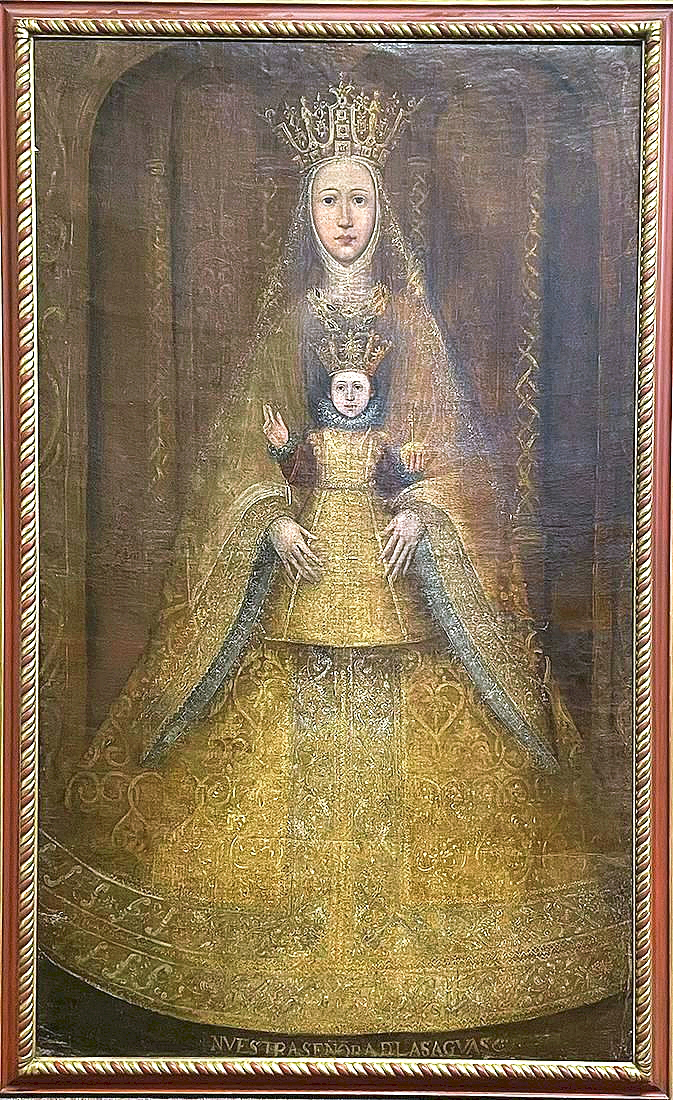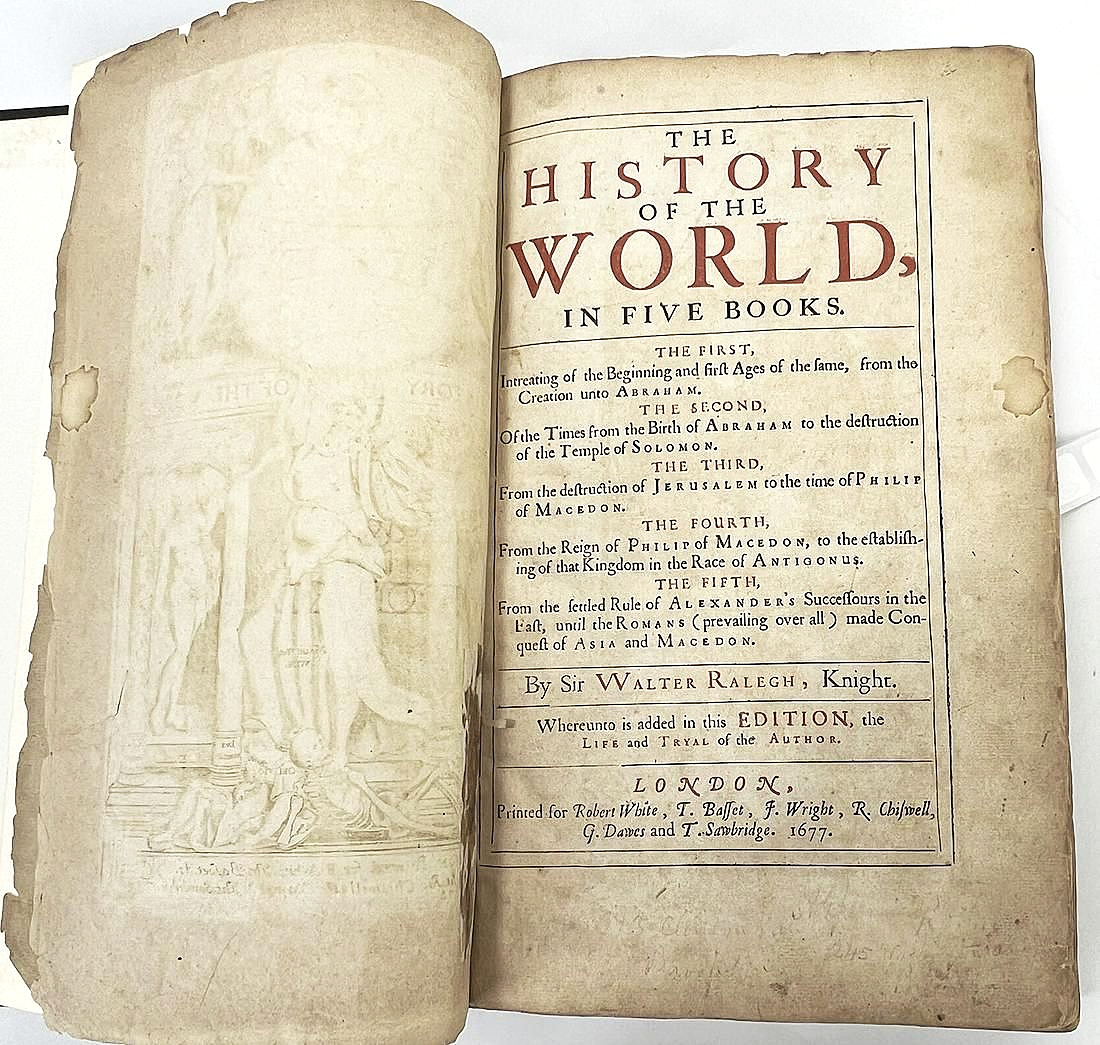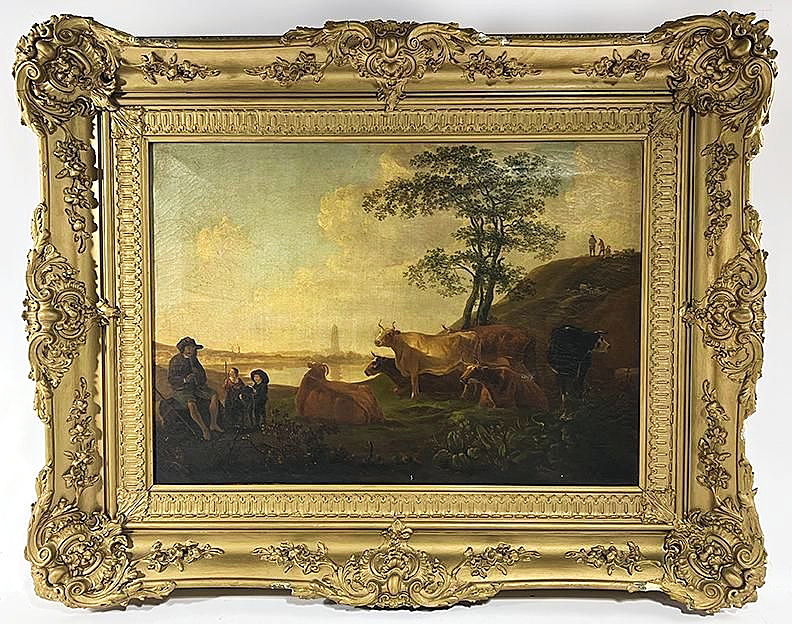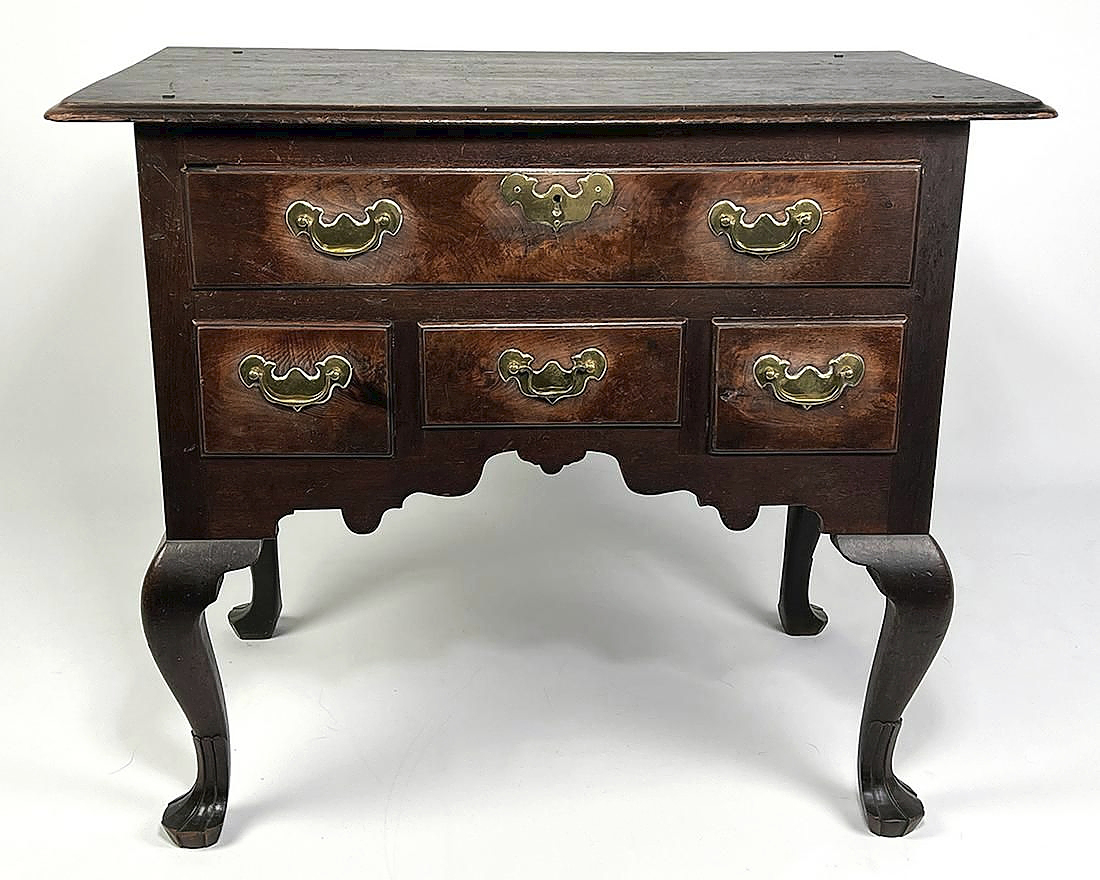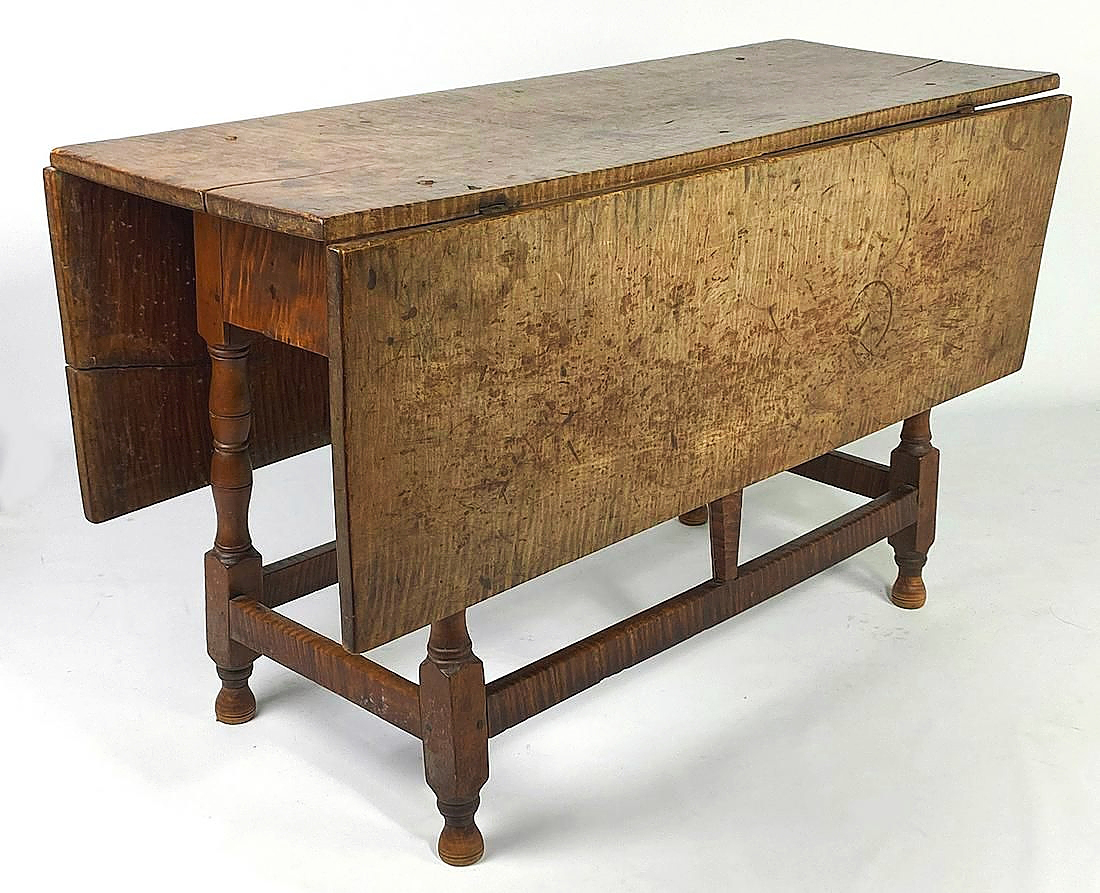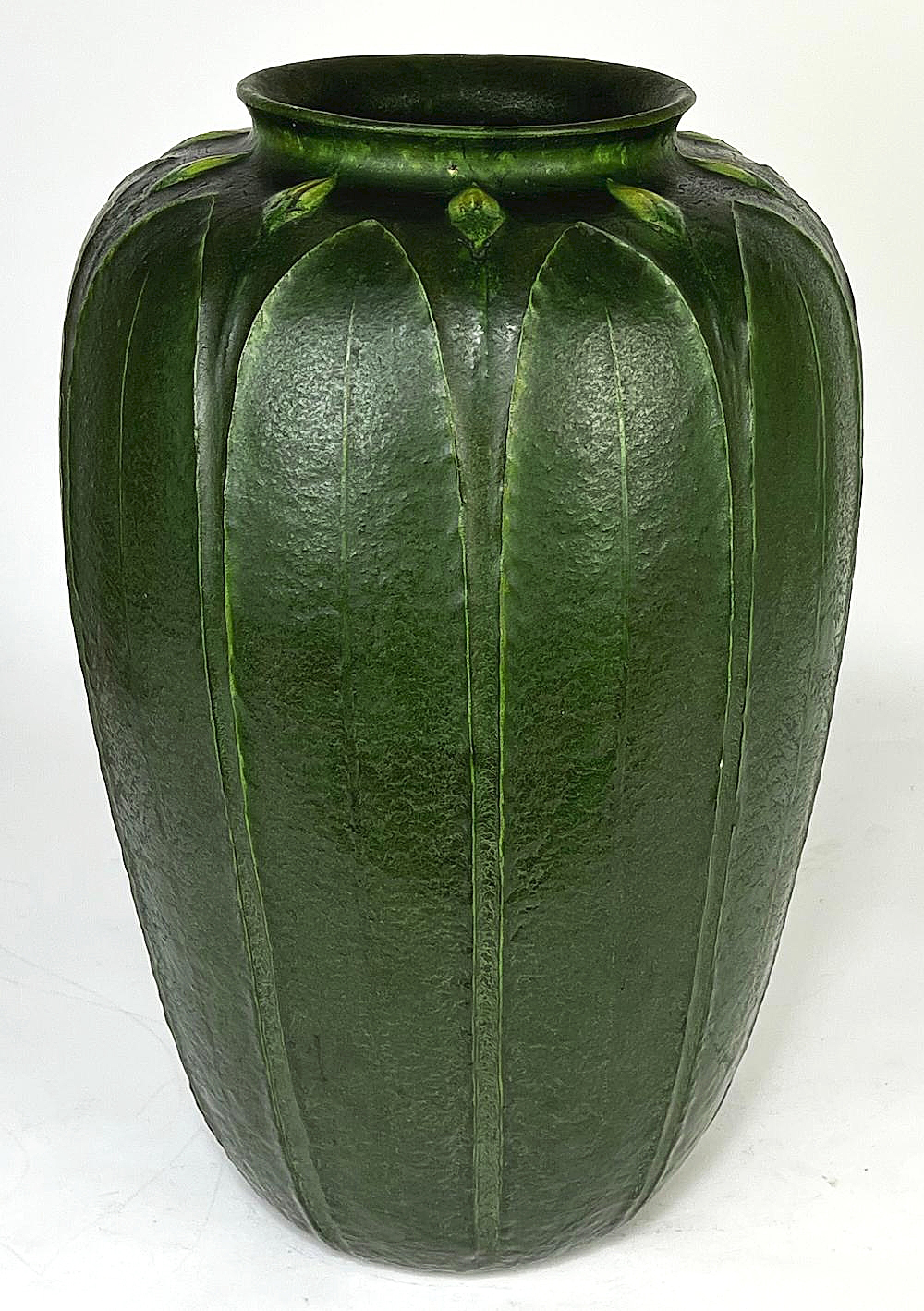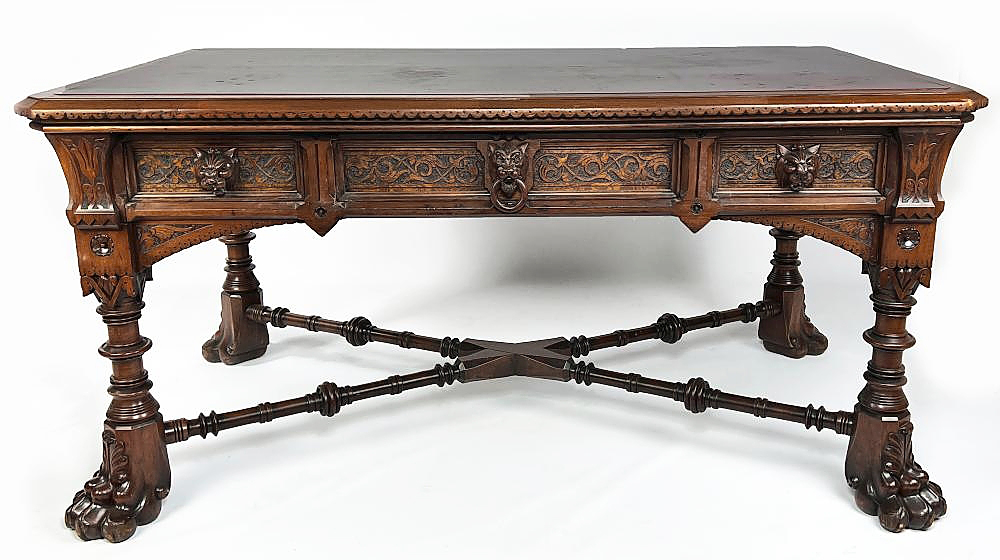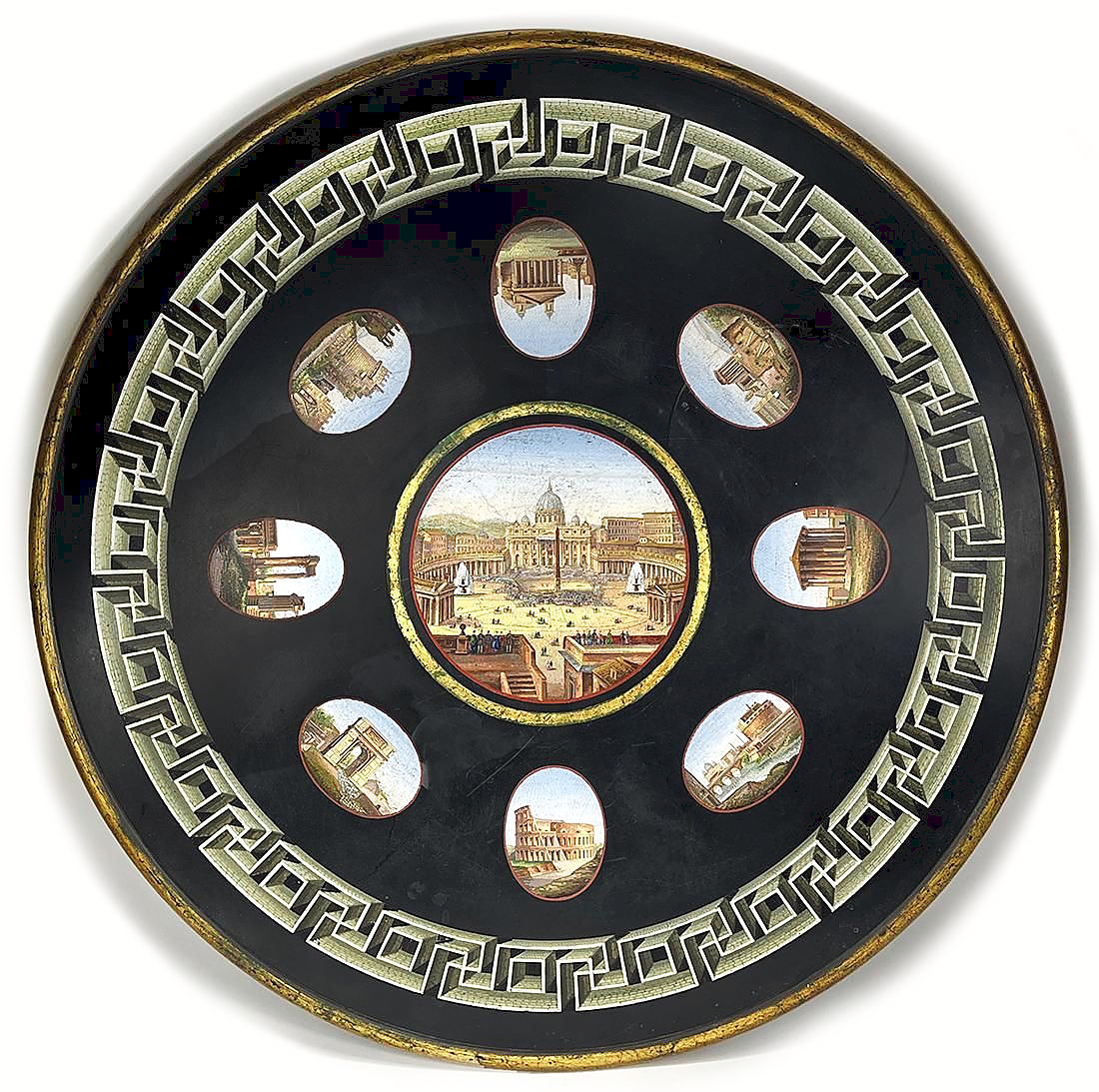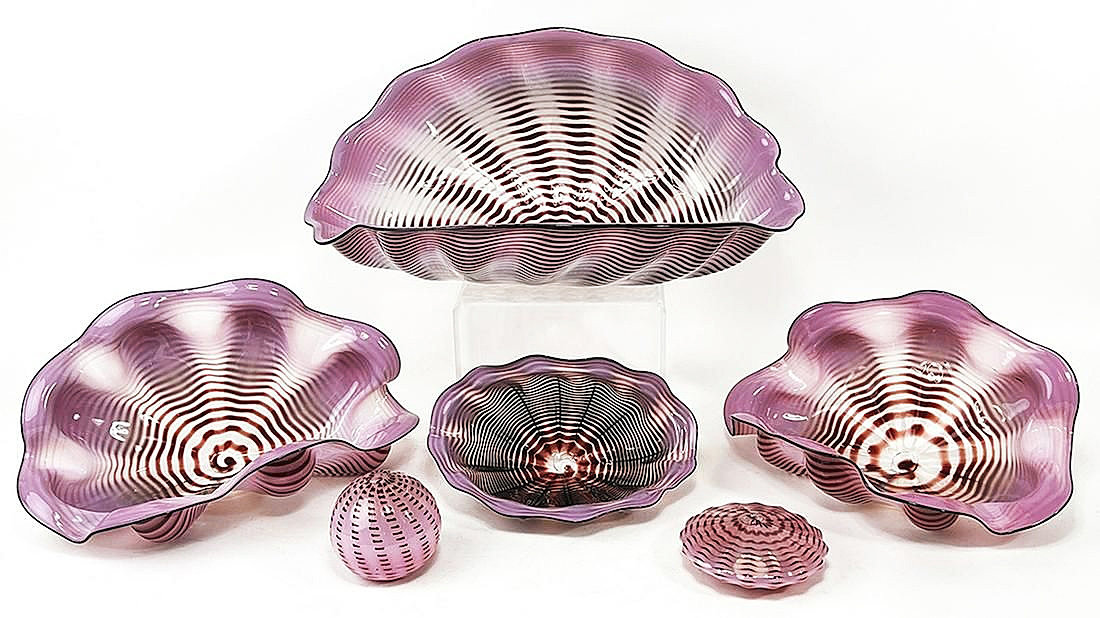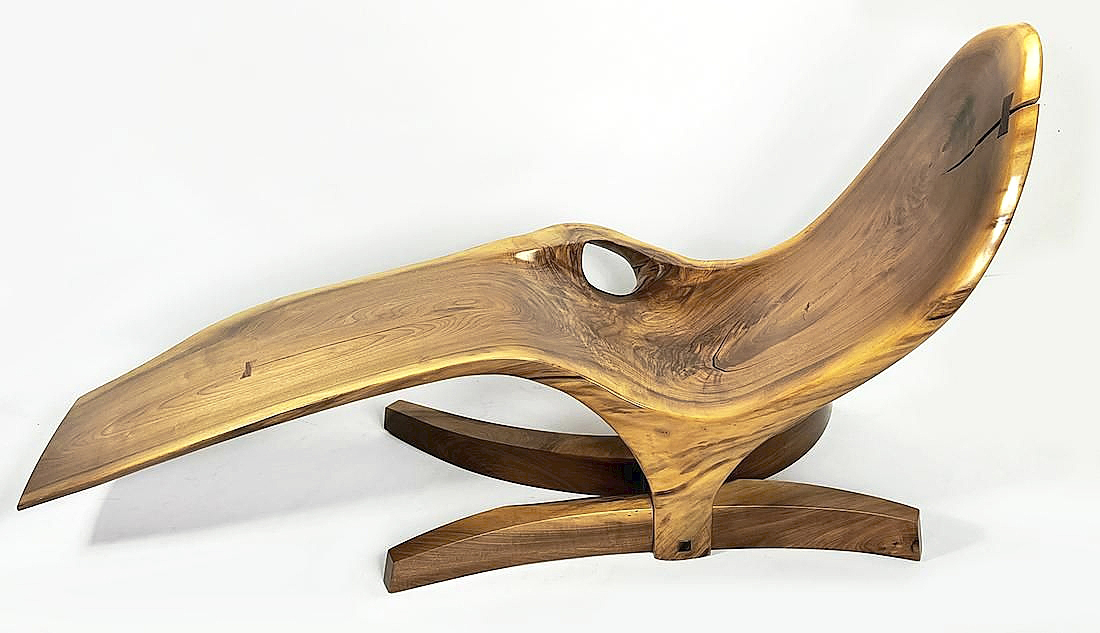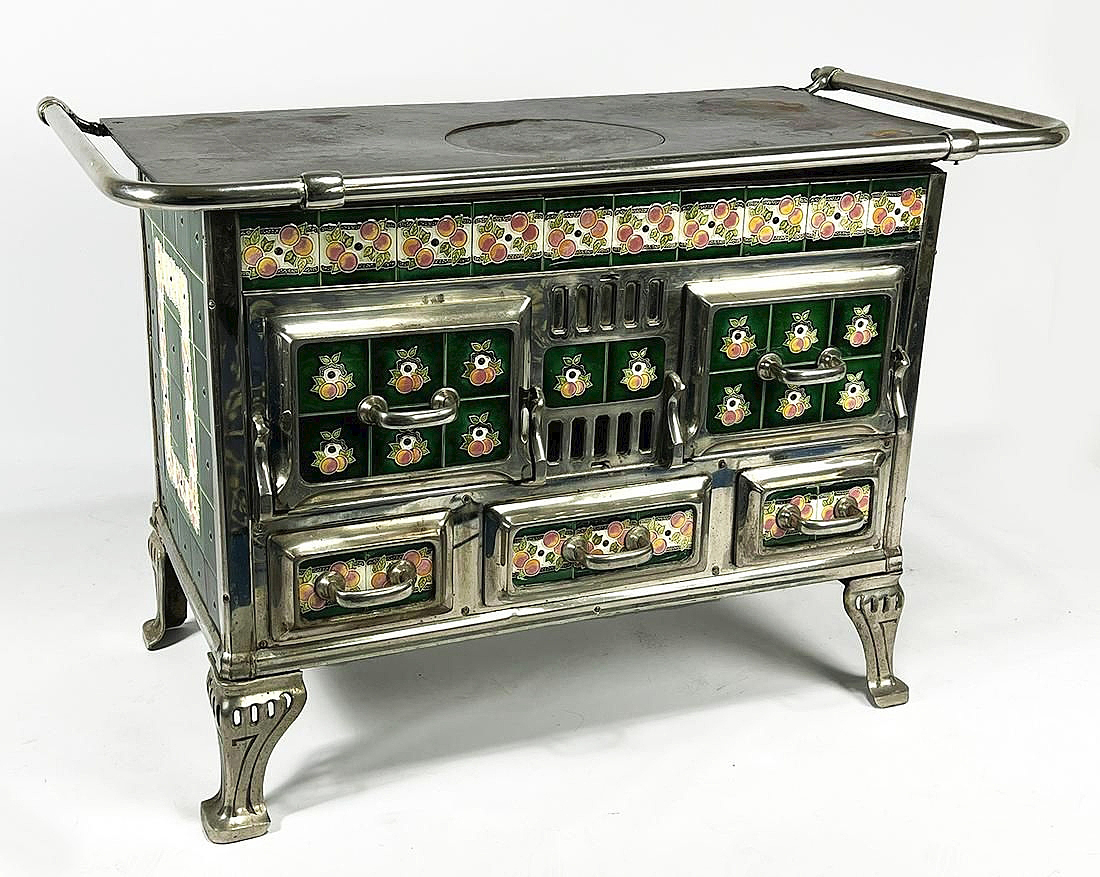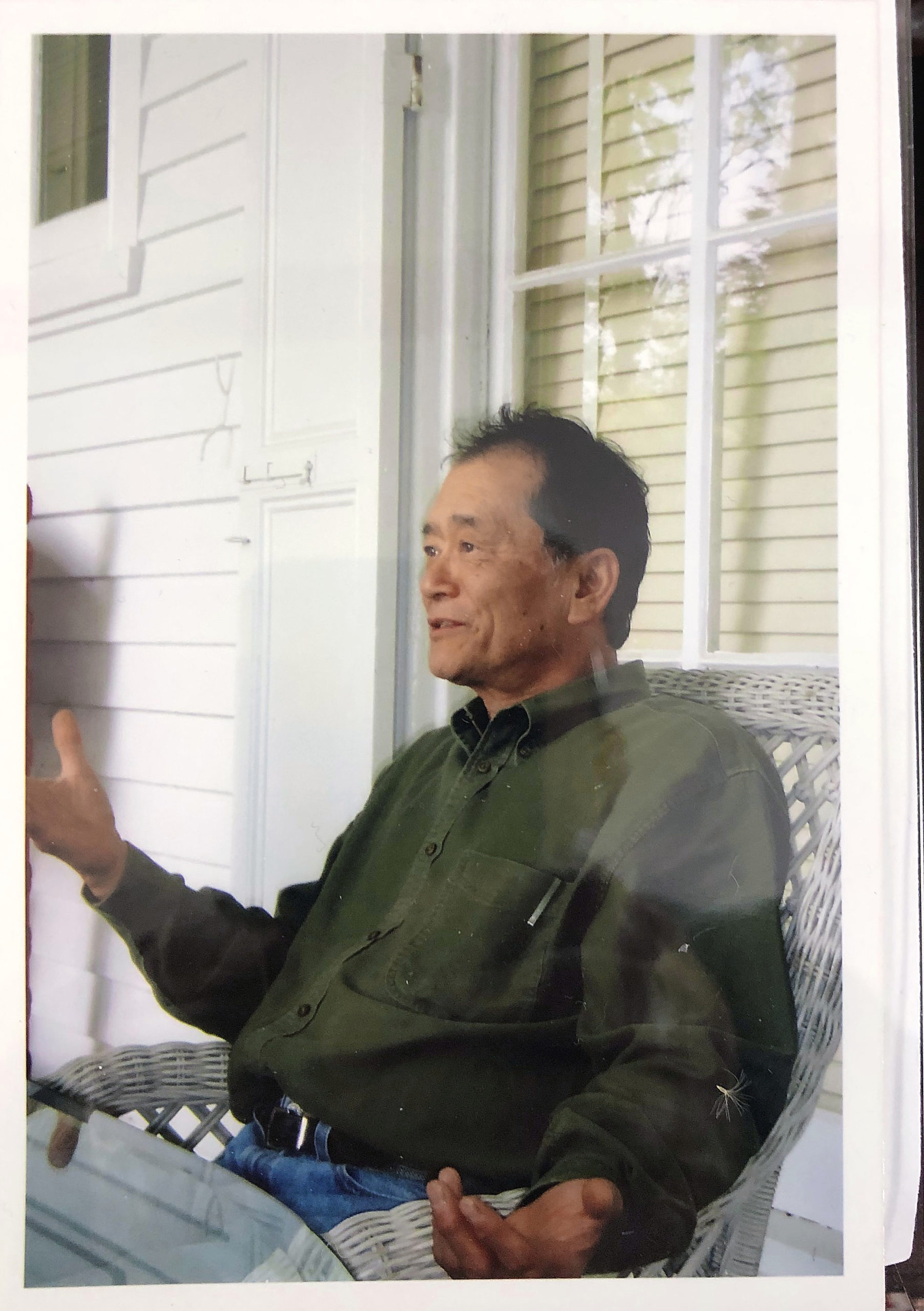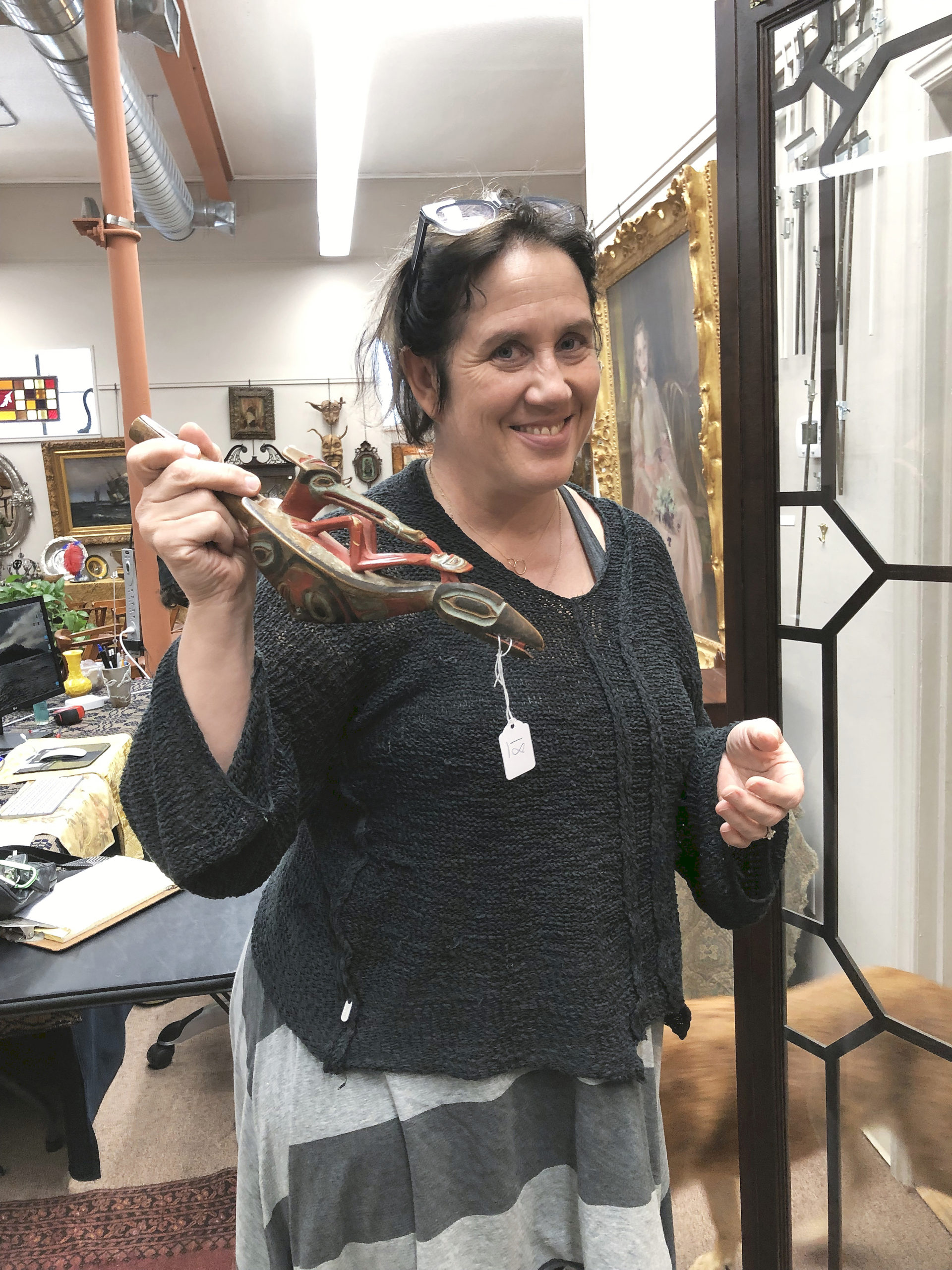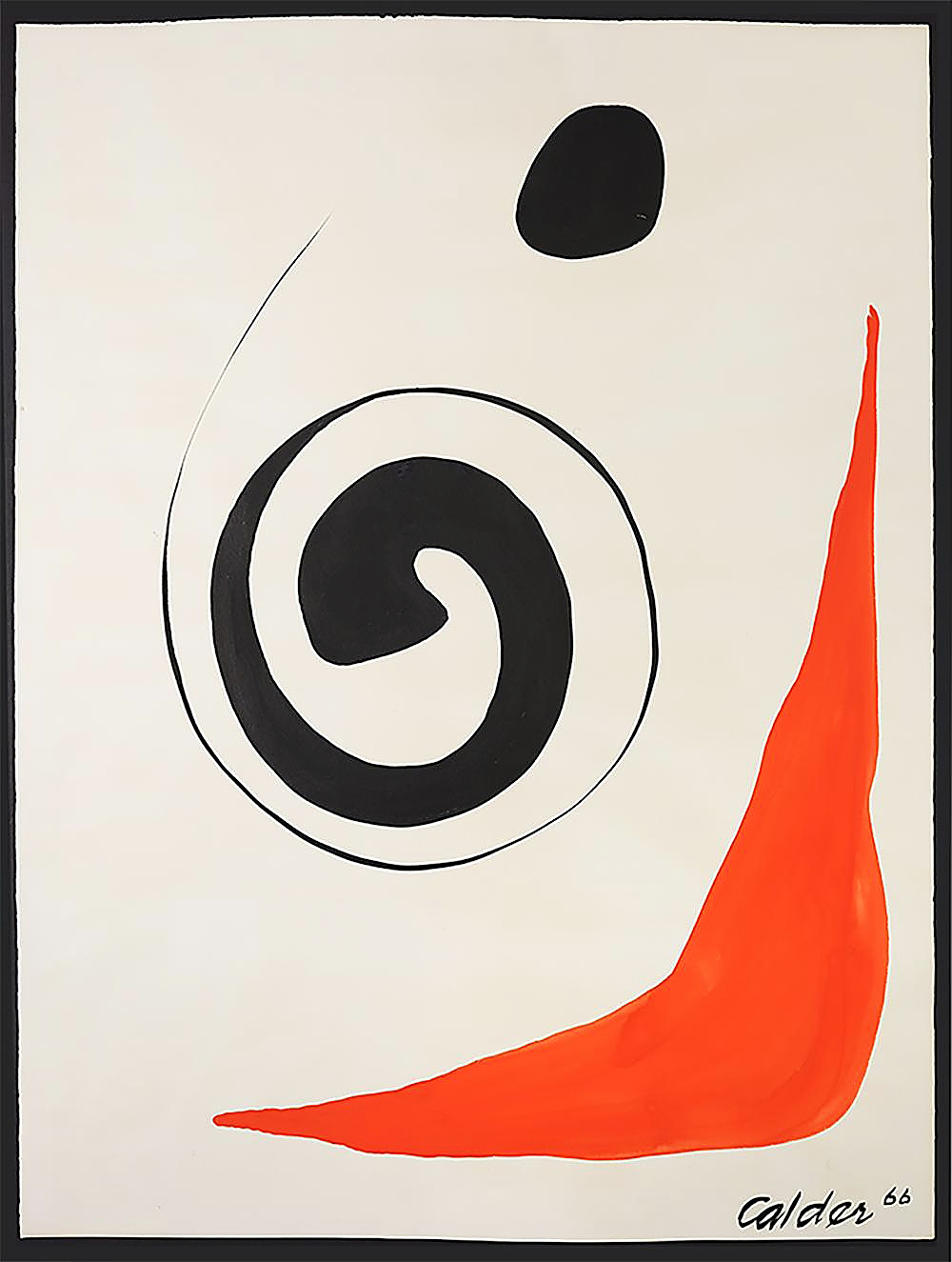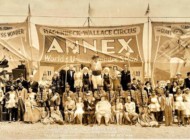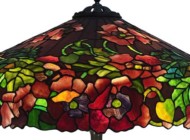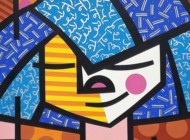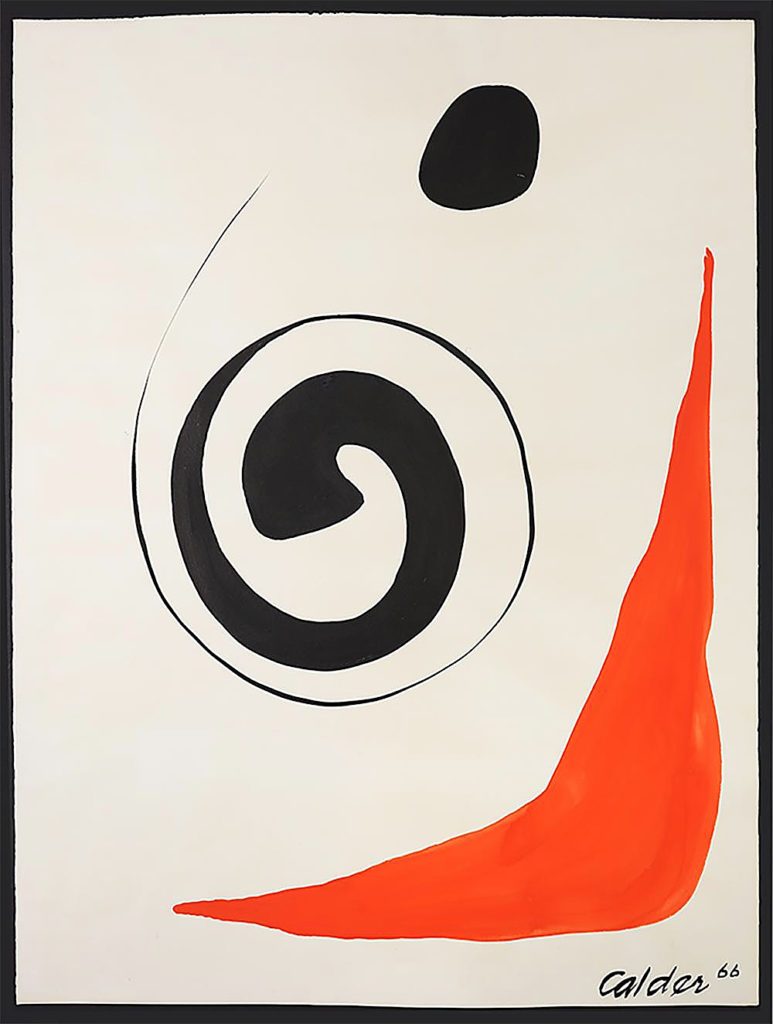
“Rolling Down,” a gouache and ink drawing by Alexander Calder earned the highest price of the sale at $76,860. Signed and dated “‘66,” it was titled on the reverse. Its authenticity had been established by the Calder Foundation.
Review & Onsite Photos by Rick Russack, Catalog Photos Courtesy CRN
CAMBRIDGE, MASS. — The variety of offerings at CRN’s April 23 sale was demonstrated by the fact that the six highest prices achieved were for items totally unrelated to one another. An Alexander Calder gouache and ink drawing earned the sale’s highest price, a two-color Grueby vase brought the second highest price and a Northwest coast Chilkat blanket, a Philadelphia Queen Anne dressing table, a Victorian Renaissance partners desk and a micromosaic tabletop rounded out the top performers. Bidders in the gallery were successful on several items, and multiple phone lines were active as were two internet platforms. There were numerous absentee bids. More than 15 items in the $900,000 sale sold for more than $10,000 each.
The star of the day was “Rolling Down,” a gouache and ink drawing by Alexander Calder (American, 1898-1976) which earned $76,860. It was signed and dated “Calder 66” and was titled on the reverse, along with the number “C525.” From the catalog, “according to the Calder Foundation, this work has not been in any publications or exhibitions and has no adverse condition issues. This work is registered in their archives under application number A07273.” An internet bidder started the activity at $35,000 and then two of the four phone bidders competed in increments of $1,000.
The sale included two major single-owner collections; one began the sale with 47 lots from a collection of Northwest Coast tribal artifacts. The collection had been assembled over a 40-year period, sourced from reputable specialist dealers and auction houses. Laura Phillips cataloged the collection, describing each item and noting provenance and condition for each lot. The first lot was a Kwakiutl totem pole, just shorter than 90 inches tall. Carved in the round, it represented a human figure and a bear eating a halibut with other tribal details, some in red and black paint. It was a good start for the day, realizing $9,760, well above the estimate in spite of a split running up one side.
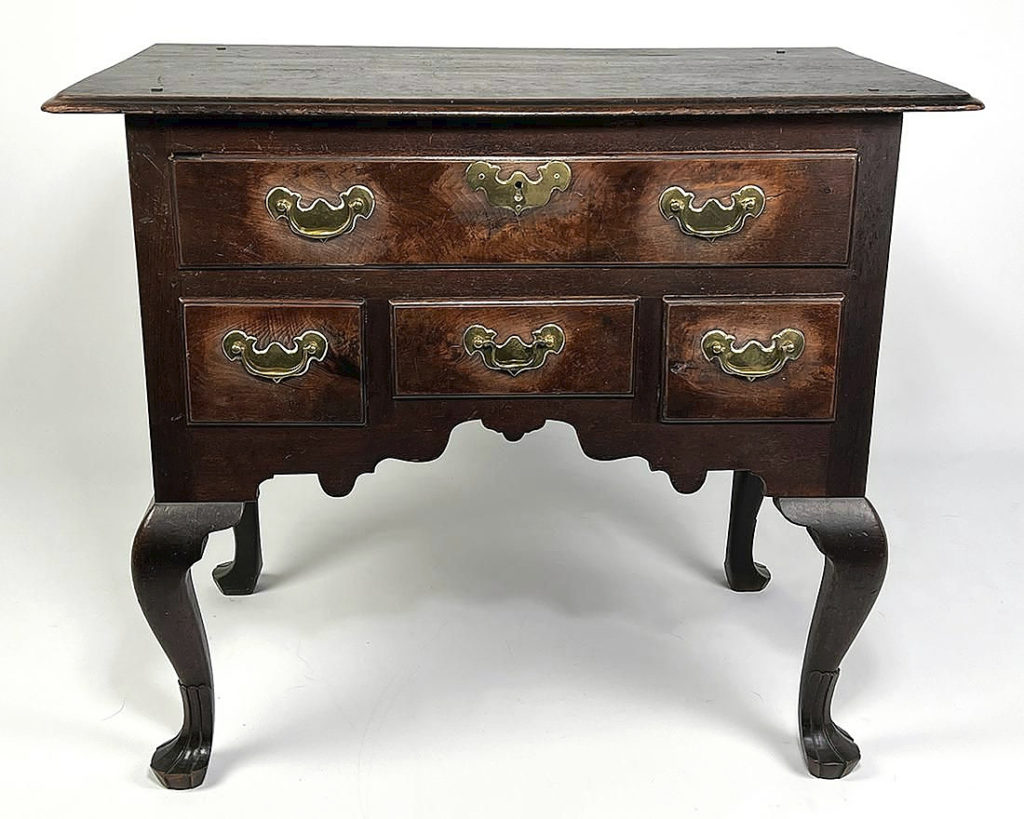
From the G.W. Samaha collection, this circa 1740-60 Philadelphia walnut Queen Anne dressing table sold for $17,080. It had remained in the family of Cornelius Stevenson, the original owner, for several generations.
Leading the Northwest Coast collection and selling for $31,720 to an internet bidder was a Chilkat blanket, woven from mountain goat wool and cedar bark in the “diving whale” pattern. Dating to the late Nineteenth or early Twentieth Century, the catalog noted the blanket “was on loan for a decade to the Rochester Museum and Science Center’s Native American Collection in the 1970’s. A second Chilkat blanket, this one made for a child, was attributed to Jennie Thlunaut, (Shax’saani Keek) (1891-1986), who was one of the last traditional Tlingit weavers. It had been purchased by the owners’ parents in the 1930s near Haines, Alaska. Her works have appeared in several books and museum exhibitions.
There were several Nineteenth Century carved Northwest Coast masks offered. Selling for $17,080 was a Tlingit shaman’s mask that combined human features with a bear’s tongue, an open mouth with teeth and a long, protruding tongue, and sight perforations below the eyes. Bringing $11,590, a Northwest Coast moon mask carved in bold relief was painted with serpents and other details in red, black and dark brown. Its upper perimeter was pierced, probably for hair attachment. A Tlingit or Haida two-piece rattle depicting a raven with box of daylight clutched in its open beak and a humanoid figure reclining on its back, in bright, original colors of black, red and pale blue, realized $10,980.
Specialist dealer Brant Mackley from Santa Fe, N.M., was at the sale. He’s been buying and selling since childhood; he bought several pieces from the collection and was the underbidder on others. Items from his collections have appeared in museum exhibitions, and he authored “Navajo Pictorial Textiles,” which was published in Hali textile magazine (2009, London). He commented on today’s market for native American artifacts, “It’s really growing and we’re seeing several new, young, collectors actively building first class collections. Since we’ve moved to Santa Fe, we’re seeing people we had never met before. Sante Fe is a tourist destination and it’s frequented by young, well-off West Coast residents as well as people from all over the country. That flow of people has really helped attract new buyers to the market.”
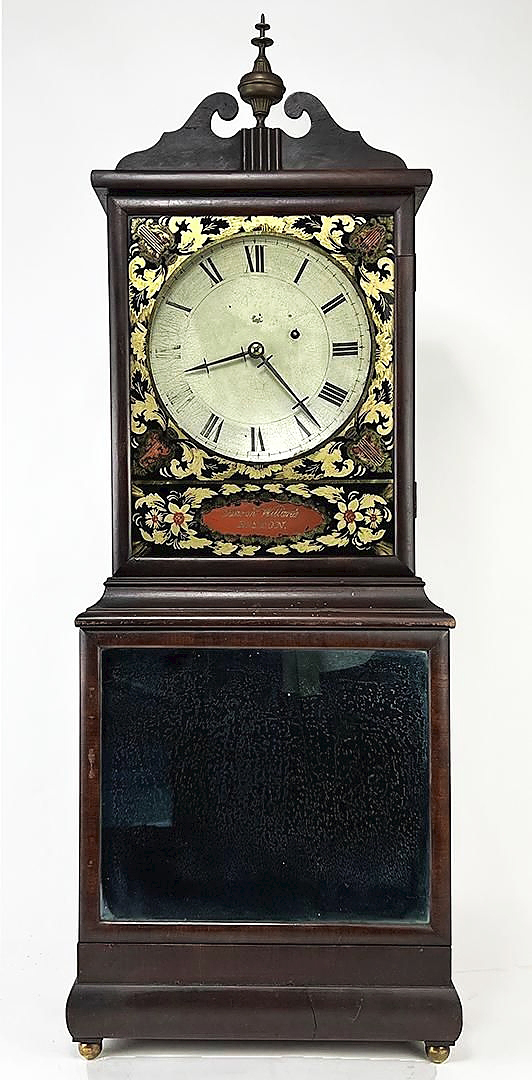
Circa 1825, this Aaron Willard, Boston shelf clock with a brass eight-day weight-driven movement brought $3,965. A card with Hatch family history was attached, indicating that it had been made for an 1825 family wedding.
Also present was Damek Oualle-Racette, a member of the Haida people, who now lives in Boston. Two of his brothers, who live in Haida Gwaii on the northwest coast of British Columbia, were also present, having come in for the sale. One of the brothers is actively involved in traditional style carving today. Aboriginal culture tourism, they said, has grown with the establishment of the Haida Heritage Centre at Kaay Ilnygaay.
The second major single-owner collection offered about 60 lots of Spanish colonial arts, much of it silver, which had been assembled by an American couple who lived for an extended period in Central America. Several of CRN’s recent sales have included portions of this collection and this sale included the final installment. Catalog descriptions often included informative notes from the collector. Such was the case with a marked Eighteenth Century silver centerpiece from Guatemala, the highest priced item from the collection in this sale, which brought $9,760. An excerpt from the extensive note informed readers, “Most likely this was ordered by a Spanish official stationed in Guatemala to be a prestigious show item, rather than to have utilitarian use.”
In addition to silver items, there were paintings and numerous religious carvings. A large Eighteenth Century Cuzco school oil on canvas, “La Virgen del Carmen holding the Christ Child,” achieved $3,965. The catalog read, “Both figures are holding images of the shield of the Carmelite Order, the Child also holding a cross and delivering the benediction with his right hand. Four cherubs float above in the clouds. Below Her are weeping, suffering sinners.”
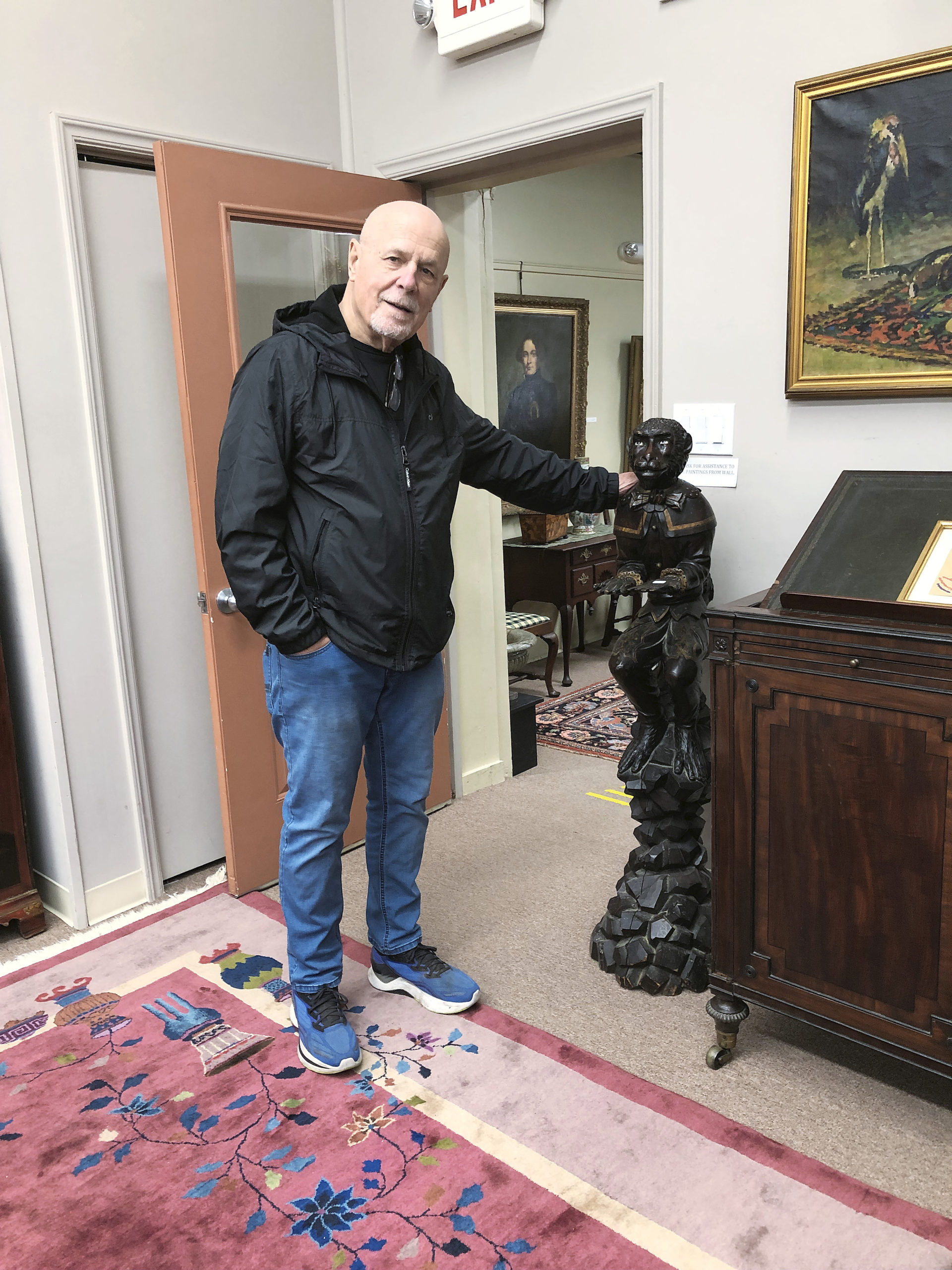
A carved full-bodied monkey in costume, with arms outstretched which once held a tray, was 52 inches tall and was Carl Nordblom’s favorite item in the sale. It brought $4,575.
In addition, the sale included early furniture with two American pieces from the G.W. Samaha collection, along with clocks and European decorative arts, and midcentury furniture from a Japanese craftsman. The Stevenson family Philadelphia walnut Queen Anne dressing table from Samaha’s collection, circa 1740-60, made $17,080. A detailed provenance, which indicated it had descended in the Stevenson family, was featured in the catalog.
Three pieces of furniture — a chaise and two chairs — were made in the mid Twentieth Century by Japanese craftsman Shinichi Miyazaki (b 1939). Crafted from large heavy single pieces of black walnut, each had been bought directly from the maker. The chaise was accompanied by a 2005 letter from the craftsman, discussing the three pieces. It earned $4,575; the tall chair realized $3,355 and the low chair traded at $1,952.
A few days after the sale, Carl Nordblom commented, “$900,000 made for a good sale and there were some pleasant surprises. I knew the Grueby vase was good, and it did better than I thought. I also didn’t expect the Calder would bring what it did. Maybe the biggest surprise was the carved Victorian partners desk. Those kinds of things are what makes the business fun for me. It’s a good feeling when we’re able to give a consignor a much bigger check than they expected.”
Prices quoted include the buyer’s premium as reported by the auction house.
For additional information, www.crnauctions.com or 617-661-9582.

